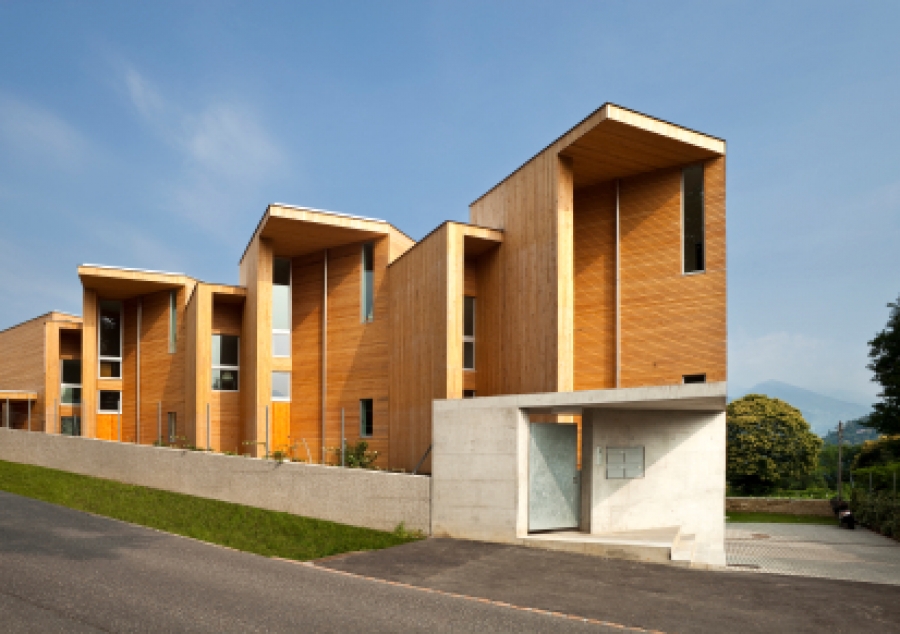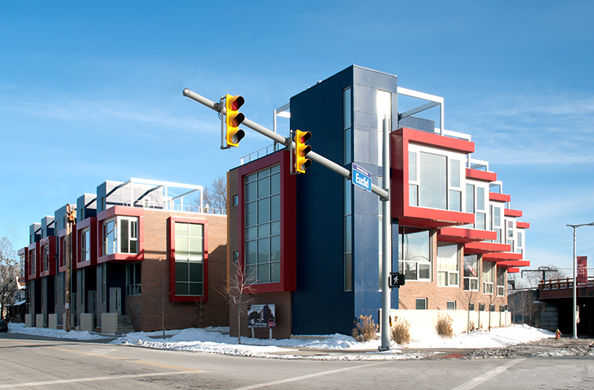LEED for Homes vs. National Green Building Standard
More homeowners are choosing to build green, but how can homeowners can be assured of the quality of the final product? One of the best ways is to gain certification from a third-party rating system. Two of the most popular are LEED for Homes and the National Green Building Standard. Although largely similar, these two systems have some significant differences.

By far, the most popular green rating system in the United States is LEED for Homes, the system that the U.S. Green Building Council (USGBC) designed specifically for new residential development. It focuses on single-family detached homes but contains provisions for neighborhood developments. The National Green Building Standard (NGBS) is a collaborative effort of the National Association of Home Builders (NAHB) and the International Code Council (ICC). The NGBS also underwent the rigorous process of becoming approved by the American National Standards Institute (ANSI) and is the only residential green building rating system thus approved. In addition to single-family, new home construction, the NGBS has specific paths for multi-unit buildings, additions, and renovations.
Similarities
The basic structure of both systems is similar. Each categorizes specific areas of green building, such as site, water conservation, energy conservation, building materials, indoor air quality, etc. Each category lists certain requirements that must be met to achieve any level of certification. These requirements are generally not much more stringent than the building code. Optional green strategies are counted as points, and each point is achieved by adhering to certain conditions that are laid out in a checklist. Finished projects are classified at certain levels of certification according to how many points they achieved.
Differences in Third-Party Verification
 Probably the most significant difference between the two systems lies in the third-party verification and testing requirements. Although both systems require some level of third-party verification, LEED for Homes is more stringent in this respect. LEED for Homes requires both a LEED for Homes Provider and a Green Rater for each project. In addition to doing preliminary (pre-construction) and final certification reviews for each project, Providers coordinate the Green Raters, recruit and register projects, and are responsible for quality assurance. A homeowner who decides to build a LEED-certified home should first find and contract with a Provider. As of February 2011, there were 132 Providers listed on the USGBC website. A Green Rater can be on staff with the Provider or a subcontractor. Green Raters perform the on-site inspections and testing. Green Raters for LEED projects must be tested and certified by the USGBC. A typical LEED for Homes project will undergo:
Probably the most significant difference between the two systems lies in the third-party verification and testing requirements. Although both systems require some level of third-party verification, LEED for Homes is more stringent in this respect. LEED for Homes requires both a LEED for Homes Provider and a Green Rater for each project. In addition to doing preliminary (pre-construction) and final certification reviews for each project, Providers coordinate the Green Raters, recruit and register projects, and are responsible for quality assurance. A homeowner who decides to build a LEED-certified home should first find and contract with a Provider. As of February 2011, there were 132 Providers listed on the USGBC website. A Green Rater can be on staff with the Provider or a subcontractor. Green Raters perform the on-site inspections and testing. Green Raters for LEED projects must be tested and certified by the USGBC. A typical LEED for Homes project will undergo:
- A preliminary certification and review by the Provider (prior to finalization of the design),
- A preliminary inspection by the Green Rater (usually just prior to drywall installation),
- Final inspection and testing by the Green Rater, and
- Final certification by the Provider.
Under the NGBS, third-party verification depends somewhat on the homeowner’s decision to follow a performance path or a prescriptive path under the energy-efficiency category. The performance path consists of inspections and testing similar to the U.S. EPA’s Energy Star program. (Energy Star approval earns an automatic Bronze certification under the Energy Efficiency category.) Electing to follow the prescriptive path may require the testing or inspecting of individual components. For example, the insulation installation may need to be graded. Testing is performed by NAHB-Approved Verifiers. As of February 2011, tthe NAHB listed more than 300 Verifiers nationwide. The Verifier should also be hired prior to construction, because the Verifier will need to inspect the preliminary certification checklist, which outlines the project’s certification goals. A typical NGBS project will undergo the following third-party verifications:
- Preliminary checklist review by Verifier,
- Rough inspection by Verifier,
- Individual component inspections as required (if the prescriptive path was specified on the application),
- Final testing and inspections,and
- Certification review by the NAHB Research Center.
Both systems have been developed by high-quality, reputable sources. LEED is probably the more recognized by homeowners and therefore more marketable, but the NGBS is often less expensive to implement. In the end, the homeowner must choose and will find an in-depth study of both systems worthwhile before committing to either.

Robert Shearer
Robert W. Shearer is a licensed architect and member of the American Institute of Architects. He holds a Bachelor of Architecture degree from Kent State University, with a minor in mathematics. He is a LEED Accredited Professional, and a Certified Green Professional (National Association of Home Builders). He has more than 13 years of experience in the building and design field, with 5 years of experience working for a commercial developer. Green building and renovation is a passion that he has had for years, and he has done extensive research on the subject. He has also honed his DIY skills during extensive renovation on his own century home.
Website: www.rwsarchitect.com/
